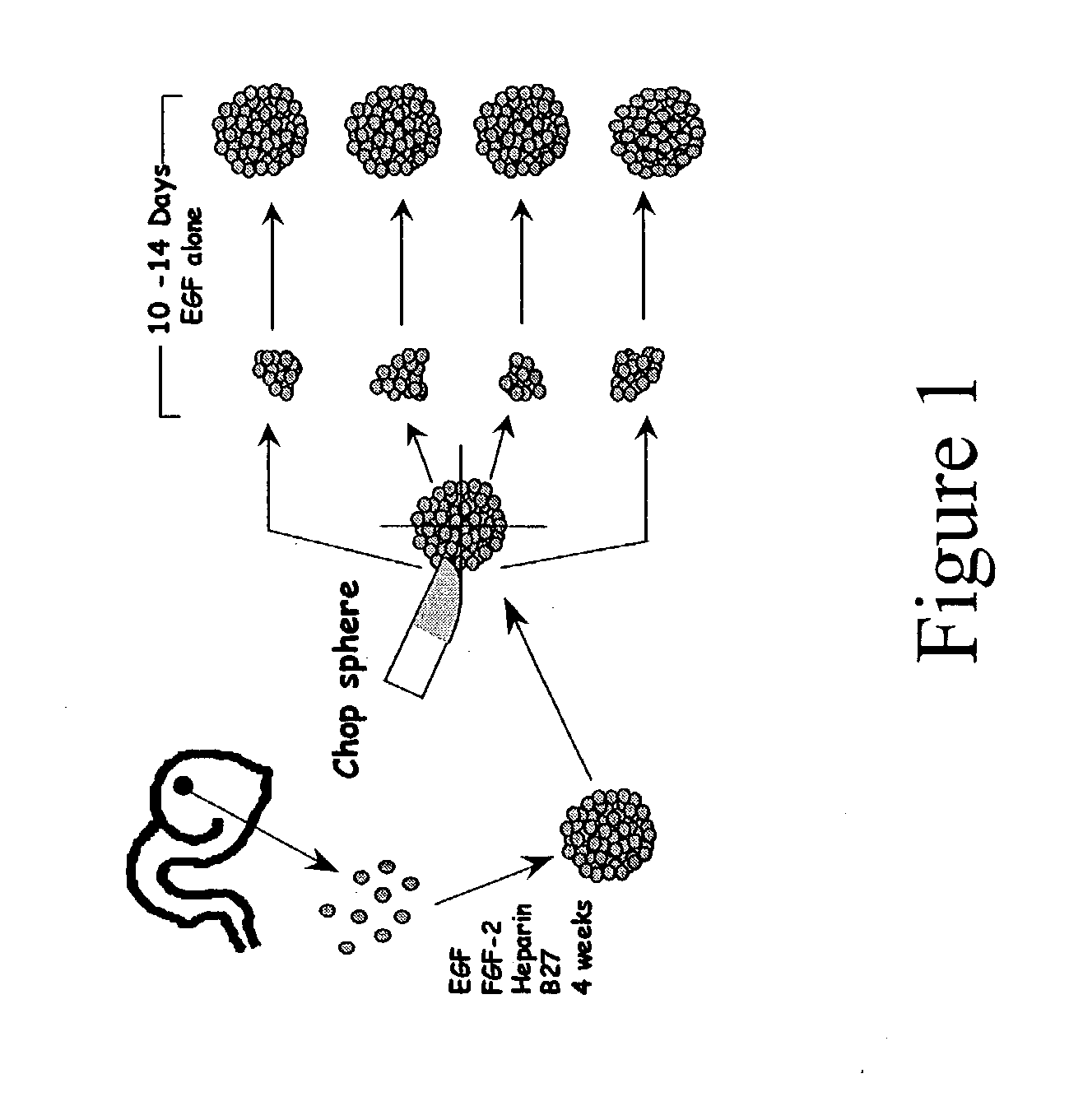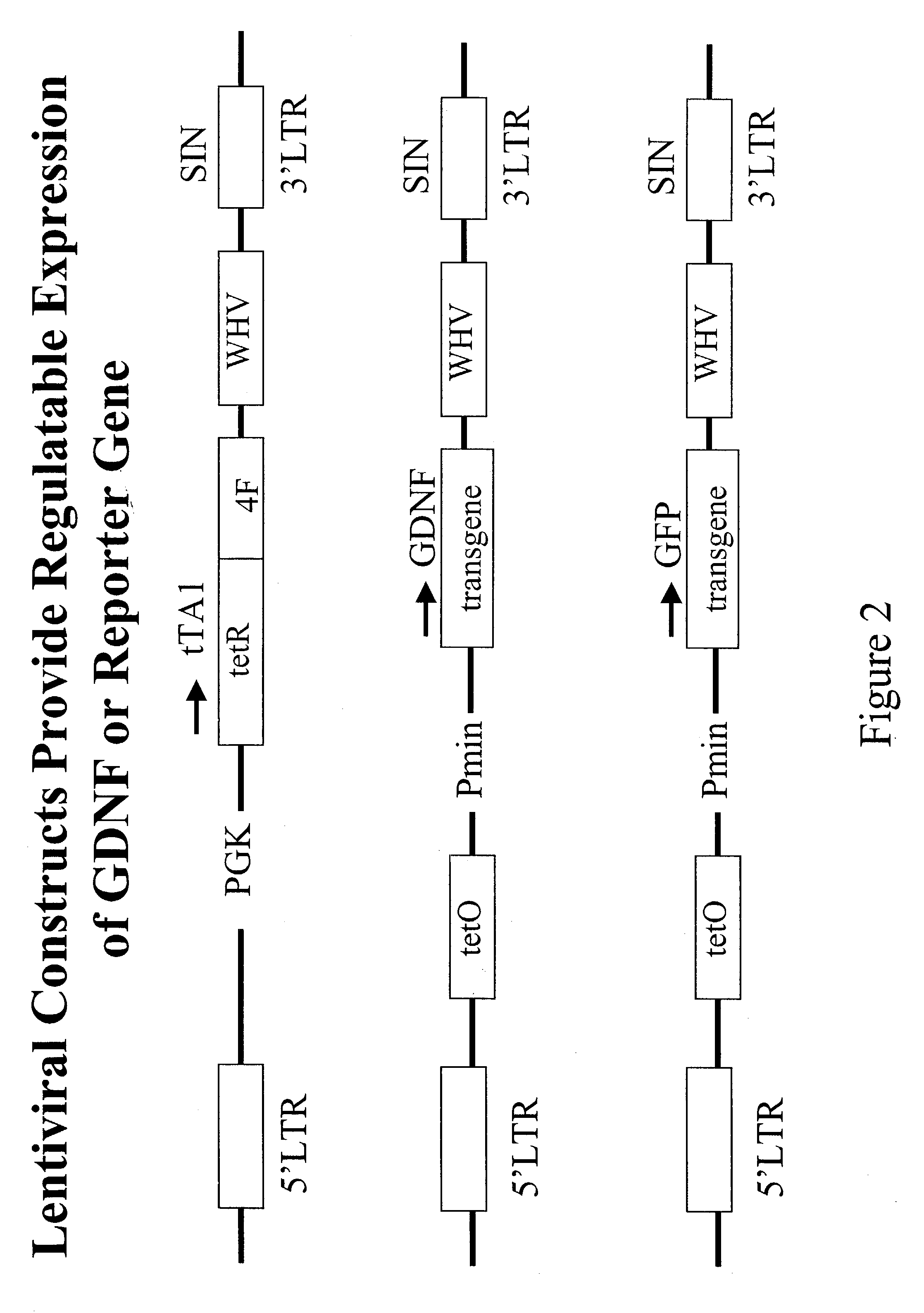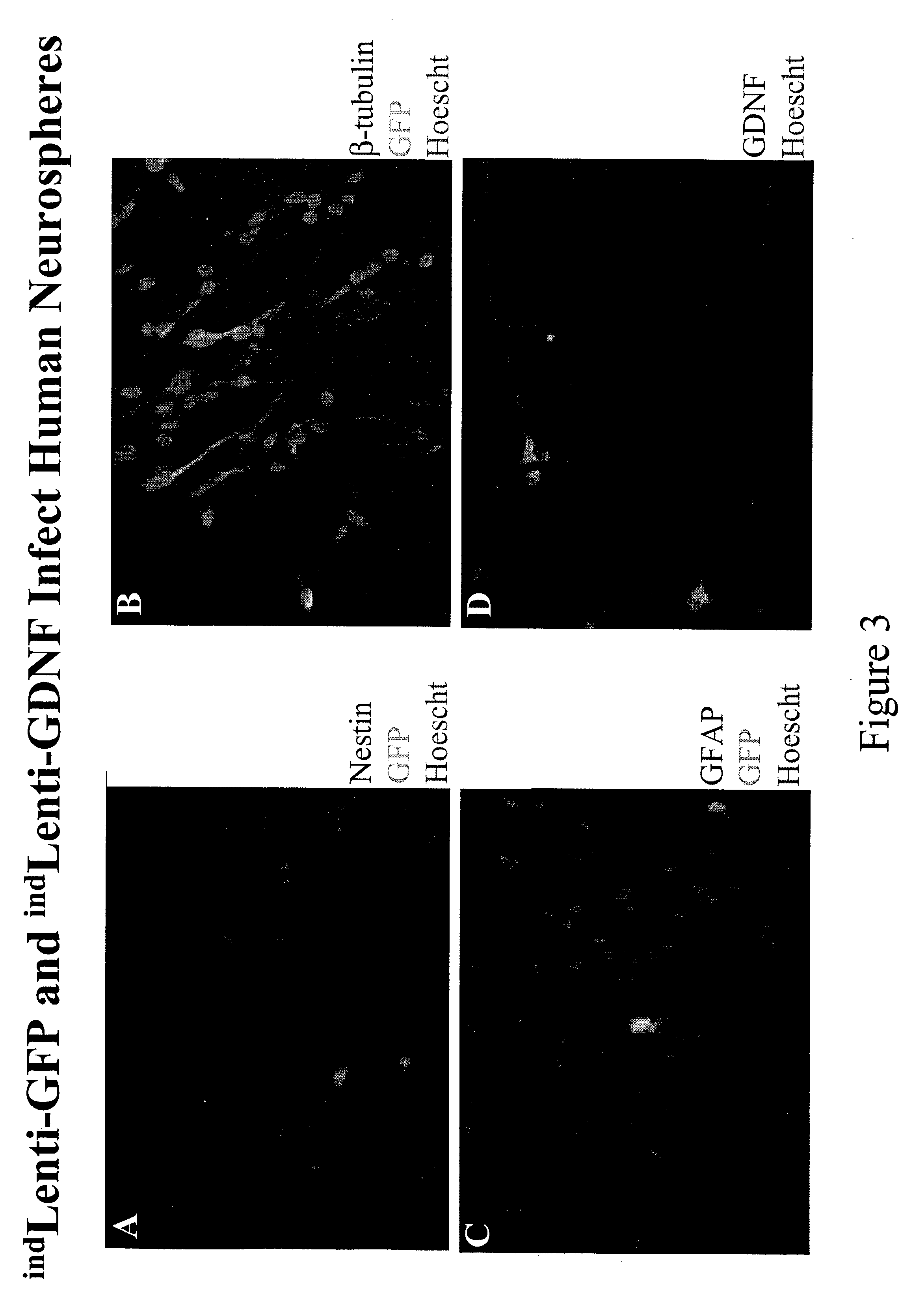Use of human neural stem cells secreting GDNF for treatment of parkinson's and other neurodegenerative diseases
a neural stem cell and parkinson's technology, applied in the field of neurodegenerative diseases and neurodegenerative diseases, can solve the problems of no longer working, severe side effects, and costing the us an estimated 25 billion dollars a year
- Summary
- Abstract
- Description
- Claims
- Application Information
AI Technical Summary
Problems solved by technology
Method used
Image
Examples
Embodiment Construction
[0062] Materials and Methods
[0063] Viral constructs. One common inducible system involves a constitutive promoter driving the tetracycline transactivator (tTA). In the absence of doxycycline (DOX), the tTA binds to an inducible promoter (tetO) located upstream of a minimal promoter which in turn drives the target gene (Gossen and Bujard, Proc. Natl. Acad. Sci. USA 89:5547-5551, 1992). DOX binds tTA and thus prevents transcription of the gene. Another system is the reverse tet-regulated system, which allows gene activation in the presence of doxycycline. Here a mutated form of tTA called rtTA is expressed. rtTA only activates tetO and gene expression when doxycycline is present (Gossen, et al., Science 268:1766-1769, 1995). A more recent method for inducible gene expression utilizes a tTA-KRAB repression system (Freundlieb, et al., J. Gene Med. 1:4-12, 1999). In this tet-on system, the rtTA is bound to the active repressor KRAB. Aside from tetracycline inducible systems, other induci...
PUM
| Property | Measurement | Unit |
|---|---|---|
| time | aaaaa | aaaaa |
| size | aaaaa | aaaaa |
| deep structure | aaaaa | aaaaa |
Abstract
Description
Claims
Application Information
 Login to View More
Login to View More - R&D
- Intellectual Property
- Life Sciences
- Materials
- Tech Scout
- Unparalleled Data Quality
- Higher Quality Content
- 60% Fewer Hallucinations
Browse by: Latest US Patents, China's latest patents, Technical Efficacy Thesaurus, Application Domain, Technology Topic, Popular Technical Reports.
© 2025 PatSnap. All rights reserved.Legal|Privacy policy|Modern Slavery Act Transparency Statement|Sitemap|About US| Contact US: help@patsnap.com



